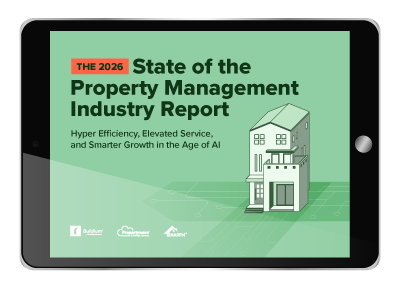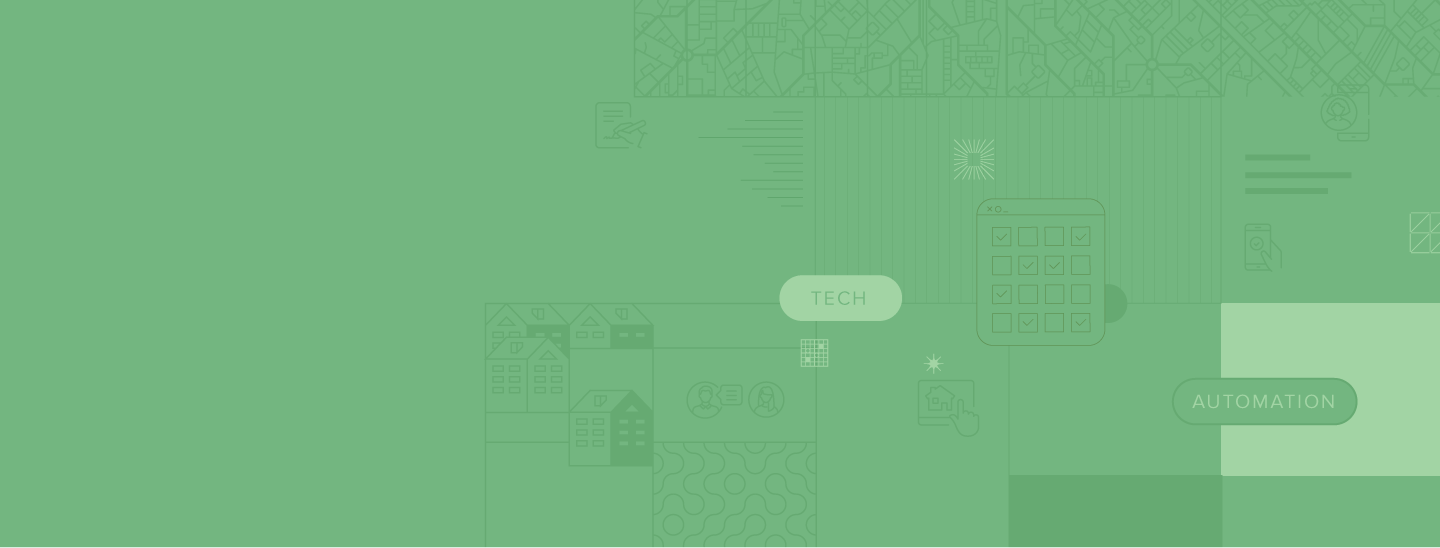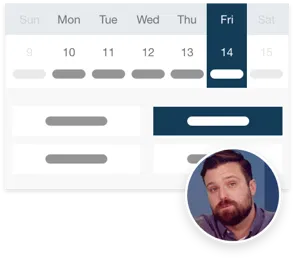Running a property management company often means either handling or delegating several different roles at once. Each of these roles has specific workflows that can make or break the success of your business. Knowing which ones to automate can save your teams hours of time and even improve the quality of service you’re providing.
Start your free trial today!
Try Buildium for free for 14 days. No credit card needed.
Start Your TrialThis post takes a deep dive into property management workflow automation, including what it is, how it works, and the kinds of processes you can redesign to be more efficient. We won’t focus on specific tools here. Instead, you’ll learn how to think about workflows strategically so you can build smarter systems for your team and your business.
What Is Workflow Automation in Property Management?
Workflow automation refers to the practice of designing a step-by-step process that runs automatically when certain conditions are met. Instead of manually pushing every task forward, such as sending emails, updating records, or assigning team members, you define a path that your system follows without needing constant input.
It’s like building a self-moving assembly line. Once a specific trigger occurs, the workflow kicks off and follows predefined steps until it reaches the finish line.
For property managers, this adds up to a few major benefits:
- Reducing delays caused by human follow-ups
- Making sure nothing falls through the cracks
- Creating predictable, repeatable experiences for tenants and owners
- Freeing up your team to focus on high-impact tasks
Shifting from Reactive to Proactive Workflows
Traditional property management can feel reactive. Workflow automation flips that mindset. Instead of reacting, you build processes that anticipate what needs to happen and trigger the right action at the right time.
For example:
- Instead of waiting for a team member to remember to send a lease renewal notice, your workflow sends it exactly 90 days before lease expiration.
- Instead of manually assigning maintenance tasks, your system routes them based on issue type and availability.
- Instead of checking in to see if a payment has cleared, your workflow updates the ledger and sends a confirmation message.
This shift doesn’t remove your team from the picture. It simply lets them focus on oversight and relationship-building, rather than mechanics.
How Workflow Automation Works (Without the Tech Jargon)
At its core, every automated workflow follows the same basic structure:
- Trigger: This is the event that kicks off the workflow. Examples: A lease is signed, a payment is late, a tenant submits a request.
- Conditions or Rules: These define how the system decides what to do next. Example: “If rent is more than 5 days overdue, apply a late fee.”
- Actions: These are the steps the system performs: sending a message, assigning a task, updating a record, or waiting until the next step.
- End Point: The workflow ends when the task is complete or a certain condition is met.
Once you understand this structure, you can apply it to dozens of areas across your property management operations.
7 Common Workflows Property Managers Can Automate
Let’s look at a range of processes that are well-suited for automation, broken down by operational category. While every business runs a little differently, these examples should spark ideas for how you can reimagine your current systems.
1. Tenant Move-In and Move-Out Workflows
Tenant turnover is one of the most process-heavy parts of property management. Every move-in and move-out involves dozens of steps, many of which follow the same sequence each time.
Automatable tasks include:
- Sending confirmation emails with move-in/move-out dates and next steps
- Scheduling cleaning or maintenance services
- Assigning key pickup or lock change tasks
- Generating condition reports or inspection reminders
- Updating unit availability status in your internal system
- Notifying utility companies (or prompting the tenant to do so)
By automating these tasks in a step-by-step sequence, you reduce last-minute scrambles and make transitions smoother for both residents and staff.
2. Application Review and Leasing Workflows
The leasing process moves quickly and requires coordination across several touchpoints. Automation helps you standardize your approach and reduce errors.
Typical automated steps might include:
- Confirming receipt of application submissions with a personalized message
- Creating checklists for required documents
- Assigning screening tasks based on applicant status
- Generating digital leases after approval
- Sending reminders for unsigned documents
- Triggering welcome messages once the lease is finalized
These workflows improve the applicant experience while freeing up your leasing agents to focus on high-quality conversations and faster approvals.
3. Maintenance and Vendor Workflows
Maintenance coordination can become chaotic without clear processes. Workflow automation gives structure to every request, whether it’s a leaking faucet or a major HVAC repair.
Workflow steps often include:
- Routing incoming requests based on location or category
- Prioritizing based on urgency (e.g., “water damage” triggers faster response)
- Assigning to the correct technician or vendor
- Sending the tenant updates on status automatically
- Confirming work completion and closing the ticket
- Requesting feedback after resolution
By automating the routing, communication, and tracking, you avoid dropped tickets and help your team handle issues more efficiently.
4. Renewals and Retention Workflows
Lease renewals are a great opportunity to retain good tenants—but only if you manage the process proactively. Automating these workflows keeps the timing consistent and avoids missed opportunities.
A typical renewal workflow might look like:
- 90 days before lease end: Send renewal intent email
- 75 days out: Notify property manager if no response
- 60 days out: Send a second reminder with updated terms
- 45 days out: Create follow-up task if tenant hasn’t responded
- 30 days out: Trigger move-out prep if no renewal is planned
With clear deadlines and automated messages, you create a better experience for tenants and minimize the gaps between occupancies.
5. Rent Collection and Delinquency Workflows
Rent collection is one of the most time-sensitive workflows, which means it stands to gain a lot from automation. Automated rent collection can improve both consistency and fairness, so long as you stay diligent and have close human oversight.
Automated workflows may include:
- Sending rent reminders before the due date
- Flagging payments as overdue after a set period
- Sending friendly late notices and fee details
- Logging all communication and payment status updates
When these workflows run automatically, your team spends less time chasing payments and more time resolving the few exceptions that actually require a conversation.
6. Compliance and Inspection Workflows
Property inspections, annual checks, and compliance requirements often get buried under day-to-day tasks. Workflow automation brings these back into focus by speeding up the routine parts of the job.
Here’s what the steps should look like:
- Scheduling inspections at regular intervals
- Assigning team members or vendors automatically
- Creating task checklists and digital forms
- Reminding tenants in advance of inspection
- Notifying managers if an inspection report is overdue
- Storing inspection data and photos in the correct records
Automating these steps helps you devote your staff’s attention to staying compliant without needing to track every date manually.
7. Owner Communication and Reporting Workflows
For owners, communication and visibility are everything. Automated workflows help you deliver updates without scrambling to create last-minute reports.
Possible workflow automations include:
- Monthly emails with performance updates
- Notifications when large expenses are logged
- Automatic sharing of lease signings or renewals
- Recurring delivery of financial summaries or occupancy stats
- Scheduling one-on-one check-in reminders with property managers
The goal here isn’t to remove human interaction. Instead, its to make sure it happens consistently and predictably.
Workflow Automation in Action: A Day in the Life
To paint a clearer picture of workflow automation in action, let’s walk through how it pops up over the course of a workday. Imagine a typical Monday morning at your property management company:
- Tenants who paid rent over the weekend automatically receive confirmation emails.
- Two applicants submitted lease applications yesterday; your workflows already generated background checks.
- A maintenance request for a broken fridge was routed last night to the on-call technician and updated in your system.
- Your leasing coordinator gets a notification: lease renewal notices for 3 tenants go out today—automatically.
- Owner financial statements for the prior month are being sent without a single spreadsheet download.
Now imagine this happens every week, without fail, without micromanagement. That’s the power of well-designed workflows.
How to Design a Workflow Automation Strategy
Not all automation is created equal. To make workflow automation work for your team, you need to think strategically. Here’s how to approach it.
Step 1: Map Your Processes
Start by identifying the major categories of your daily work—leasing, maintenance, finance, communication, inspections, etc. Break each category into smaller processes. Then ask:
- Which steps happen every time?
- Which tasks follow a predictable sequence?
- Where do delays or confusion usually occur?
These questions help you see which parts are ripe for automation.
Step 2: Identify Triggers and Outcomes
For each process, define what starts the workflow and what the endpoint should be. Think in terms of:
- “When a tenant submits X, the system should do Y.”
- “Once Y happens, the next step should be Z.”
You’re building a domino effect. One action leads smoothly to the next.
Step 3: Write Clear Rules
The best workflows include rules that prevent ambiguity. For example:
- “Send email A only if the lease status is pending.”
- “Assign maintenance requests with ‘urgent’ tags to Team 1, all others to Team 2.”
- “If no response is received in 7 days, send a reminder.”
These rules allow your automation to make decisions without constant human review.
Step 4: Build Feedback Loops
No workflow is perfect out of the box. Set up ways to track performance and make adjustments. To get the ball rolling, you might want to:
- Review task completion rates and turnaround times
- Ask your team where they still need to intervene
- Monitor tenant and owner satisfaction related to each workflow
These feedback loops help you fine-tune your systems over time.
Building a Property Management Engine That Scales
Workflow automation organizes and streamlines work, it doesn’t outright eliminate work. It lets you create a property management engine that moves smoothly, handles repetitive tasks with consistency, and gives your team more space to solve problems and connect with people.
As your portfolio grows, so does complexity. But with workflow automation, you don’t have to grow your workload at the same pace. You can scale with more control, fewer mistakes, and a better experience for everyone involved.
An easy way to introduce automated workflows that scale with your business is to use comprehensive property management software such as Buildium with automation built into its features.
Buildium includes automated workflows for accounting, leasing, maintenance, and much more, and you can even try it for free with a no-risk, 14-day trial or by signing up for a live demo.
Read more on Growth

